

For over 20 years, Steffen Kuhn has been consulting automotive companies. He works for Elektrobit as the Head of Consulting. Steffen Kuhn has initiated a working group in the OADF (Open Autodrive Forum) regarding map safety and published a whitepaper regarding this topic together with Baidu. Currently he supports the definition of HD map requirements for the upcoming technical specification ISO TS 5083 (safety for driving automation functions).
Steffen Kuhn
 Steffen Kuhn
Head of Consulting , Elektrobit Automotive GmbH , Germany
Steffen Kuhn
Head of Consulting , Elektrobit Automotive GmbH , Germany
For over 20 years, Steffen Kuhn has been consulting automotive companies. He works for Elektrobit as the Head of Consulting. Steffen Kuhn has initiated a working group in the OADF (Open Autodrive Forum) regarding map safety and published a whitepaper regarding this topic together with Baidu. Currently he supports the definition of HD map requirements for the upcoming technical specification ISO TS 5083 (safety for driving automation functions).

For over 20 years, Steffen Kuhn has been consulting automotive companies. He works for Elektrobit as the Head of Consulting. Steffen Kuhn has initiated a working group in the OADF (Open Autodrive Forum) regarding map safety and published a whitepaper regarding this topic together with Baidu. Currently he supports the definition of HD map requirements for the upcoming technical specification ISO TS 5083 (safety for driving automation functions).
Head of Consulting | Elektrobit Automotive GmbH | Germany


Abstract
Geo-enable your organization with MLOps
Once the preserve of public-sector organizations, many commercial sectors are now embracing geospatial applications for a wide range of use cases, including civil engineering, financial services, logistics, mining operations, and many more. Over 80% of enterprises already employ location data as part of their data strategy and plan to enhance it with context & time series i.e., geospatial imagery. With the world generating over 200TB of Earth Observation (EO) imagery on a daily basis, this source of ground truth will enable every company in the world to become a geospatial driven business within the next decade. The key to 'geo-enabling' companies and boosting geospatial mass adoption is moving away from complex, inefficient, and expensive workflows and making fundamental changes in machine learning practices. This is where geospatial MLOps, and platforms such as Picterra, play a crucial role, enabling companies to train, deploy, and manage geospatial models faster than ever before. Join our session to deep dive into how Picterra, a versatile cloud-native platform to create and operate at scale geospatial ML models transforms the way enterprises across industries can develop their own business applications and services to solve some of the toughest geospatial problems, future proofing their businesses and supporting a transition to a decarbonized economy.
Pascal Van Dalen
 Pascal Van Dalen
Chief Growth Officer , Picterra , Switzerland
Pascal Van Dalen
Chief Growth Officer , Picterra , Switzerland
Abstract
Geo-enable your organization with MLOps
Once the preserve of public-sector organizations, many commercial sectors are now embracing geospatial applications for a wide range of use cases, including civil engineering, financial services, logistics, mining operations, and many more. Over 80% of enterprises already employ location data as part of their data strategy and plan to enhance it with context & time series i.e., geospatial imagery. With the world generating over 200TB of Earth Observation (EO) imagery on a daily basis, this source of ground truth will enable every company in the world to become a geospatial driven business within the next decade. The key to 'geo-enabling' companies and boosting geospatial mass adoption is moving away from complex, inefficient, and expensive workflows and making fundamental changes in machine learning practices. This is where geospatial MLOps, and platforms such as Picterra, play a crucial role, enabling companies to train, deploy, and manage geospatial models faster than ever before. Join our session to deep dive into how Picterra, a versatile cloud-native platform to create and operate at scale geospatial ML models transforms the way enterprises across industries can develop their own business applications and services to solve some of the toughest geospatial problems, future proofing their businesses and supporting a transition to a decarbonized economy.

Abstract
Geo-enable your organization with MLOps
Once the preserve of public-sector organizations, many commercial sectors are now embracing geospatial applications for a wide range of use cases, including civil engineering, financial services, logistics, mining operations, and many more. Over 80% of enterprises already employ location data as part of their data strategy and plan to enhance it with context & time series i.e., geospatial imagery. With the world generating over 200TB of Earth Observation (EO) imagery on a daily basis, this source of ground truth will enable every company in the world to become a geospatial driven business within the next decade. The key to 'geo-enabling' companies and boosting geospatial mass adoption is moving away from complex, inefficient, and expensive workflows and making fundamental changes in machine learning practices. This is where geospatial MLOps, and platforms such as Picterra, play a crucial role, enabling companies to train, deploy, and manage geospatial models faster than ever before. Join our session to deep dive into how Picterra, a versatile cloud-native platform to create and operate at scale geospatial ML models transforms the way enterprises across industries can develop their own business applications and services to solve some of the toughest geospatial problems, future proofing their businesses and supporting a transition to a decarbonized economy.
Chief Growth Officer | Picterra | Switzerland


Aaron Su is a software engineer and the technical lead of the GroundWork (https://groundwork.azavea.com/) product at Azavea. He has a background in geographic information science, computer science, and cartography. He has worked on open-source products such as Raster Foundry (https://rasterfoundry.azavea.com/) and Franklin (https://azavea.github.io/franklin/), and has contributed to STAC spec (https://github.com/radiantearth/stac-spec).
Abstract
Human-in-the-loop Machine Learning with Realtime Model Predictions on Satellite Images
Acquiring and labeling geospatial data from satellite images for training machine learning models is a time-consuming and expensive process. Meanwhile, the improvement of the underlying model in the conventional workflow does not get domain-specific human feedback until late in the process. This process is further impaired by the lack of specialized open-source tools for dealing with the idiosyncrasies of geospatial data. In order to mitigate the high cost and time investment currently required to generate new annotations and train models, I will present a workflow based on human-in-the-loop (HITL) active learning that enables users to spend their labeling budget more efficiently while still being able to train a high-performing model. In this talk, I will present a solution and lessons learned that provide a real-time HITL active learning workflow on satellite images and give attendees insight into how a HITL learning process on remote imagery can be incorporated into their own solutions. This workflow incorporates our image annotation platform, GroundWork (https://groundwork.azavea.com), with our open-source deep learning framework, Raster Vision (https://rastervision.io). It allows data experts to immediately see the effect of their created labels on the model's performance and gives GIS and machine learning experts a clear view of the model's current strength and weaknesses at all times. Because of this, the workflow speeds up the labeling-training-labeling cycle and makes the connection between the AI and human experts easy and seamless. Attendees will see how we incorporate the available and open-source tools for a human-in-the-loop active learning experience, and how we approach the interoperability challenges, which helps attendees make use of the data and model products in their downstream workflow. This loop complies with the STAC (https://stacspec.org) and OGC Features (https://www.ogc.org/standards/ogcapi-features) open standards.
Aaron Su
 Aaron Su
Software Engineer , Element 84 , USA
Aaron Su
Software Engineer , Element 84 , USA
Aaron Su is a software engineer and the technical lead of the GroundWork (https://groundwork.azavea.com/) product at Azavea. He has a background in geographic information science, computer science, and cartography. He has worked on open-source products such as Raster Foundry (https://rasterfoundry.azavea.com/) and Franklin (https://azavea.github.io/franklin/), and has contributed to STAC spec (https://github.com/radiantearth/stac-spec).
Abstract
Human-in-the-loop Machine Learning with Realtime Model Predictions on Satellite Images
Acquiring and labeling geospatial data from satellite images for training machine learning models is a time-consuming and expensive process. Meanwhile, the improvement of the underlying model in the conventional workflow does not get domain-specific human feedback until late in the process. This process is further impaired by the lack of specialized open-source tools for dealing with the idiosyncrasies of geospatial data. In order to mitigate the high cost and time investment currently required to generate new annotations and train models, I will present a workflow based on human-in-the-loop (HITL) active learning that enables users to spend their labeling budget more efficiently while still being able to train a high-performing model. In this talk, I will present a solution and lessons learned that provide a real-time HITL active learning workflow on satellite images and give attendees insight into how a HITL learning process on remote imagery can be incorporated into their own solutions. This workflow incorporates our image annotation platform, GroundWork (https://groundwork.azavea.com), with our open-source deep learning framework, Raster Vision (https://rastervision.io). It allows data experts to immediately see the effect of their created labels on the model's performance and gives GIS and machine learning experts a clear view of the model's current strength and weaknesses at all times. Because of this, the workflow speeds up the labeling-training-labeling cycle and makes the connection between the AI and human experts easy and seamless. Attendees will see how we incorporate the available and open-source tools for a human-in-the-loop active learning experience, and how we approach the interoperability challenges, which helps attendees make use of the data and model products in their downstream workflow. This loop complies with the STAC (https://stacspec.org) and OGC Features (https://www.ogc.org/standards/ogcapi-features) open standards.

Aaron Su is a software engineer and the technical lead of the GroundWork (https://groundwork.azavea.com/) product at Azavea. He has a background in geographic information science, computer science, and cartography. He has worked on open-source products such as Raster Foundry (https://rasterfoundry.azavea.com/) and Franklin (https://azavea.github.io/franklin/), and has contributed to STAC spec (https://github.com/radiantearth/stac-spec).
Abstract
Human-in-the-loop Machine Learning with Realtime Model Predictions on Satellite Images
Acquiring and labeling geospatial data from satellite images for training machine learning models is a time-consuming and expensive process. Meanwhile, the improvement of the underlying model in the conventional workflow does not get domain-specific human feedback until late in the process. This process is further impaired by the lack of specialized open-source tools for dealing with the idiosyncrasies of geospatial data. In order to mitigate the high cost and time investment currently required to generate new annotations and train models, I will present a workflow based on human-in-the-loop (HITL) active learning that enables users to spend their labeling budget more efficiently while still being able to train a high-performing model. In this talk, I will present a solution and lessons learned that provide a real-time HITL active learning workflow on satellite images and give attendees insight into how a HITL learning process on remote imagery can be incorporated into their own solutions. This workflow incorporates our image annotation platform, GroundWork (https://groundwork.azavea.com), with our open-source deep learning framework, Raster Vision (https://rastervision.io). It allows data experts to immediately see the effect of their created labels on the model's performance and gives GIS and machine learning experts a clear view of the model's current strength and weaknesses at all times. Because of this, the workflow speeds up the labeling-training-labeling cycle and makes the connection between the AI and human experts easy and seamless. Attendees will see how we incorporate the available and open-source tools for a human-in-the-loop active learning experience, and how we approach the interoperability challenges, which helps attendees make use of the data and model products in their downstream workflow. This loop complies with the STAC (https://stacspec.org) and OGC Features (https://www.ogc.org/standards/ogcapi-features) open standards.
Software Engineer | Element 84 | USA
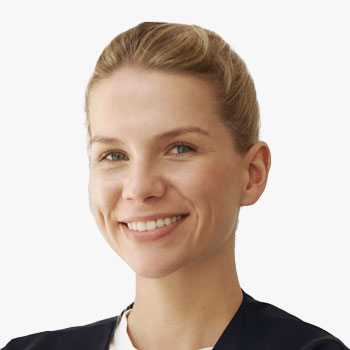

Julia is leading the Data Science Team at the Munich-based new space company OroraTech. She has a background in environmental science and ML engineering & research (Siemens, DLR, ESA).
Abstract
Thermal Infrared Satellite Data
Intro: Our Satellite FOREST-1, planned constellation - thermal infrared data products overview - data analytics and applied ML on thermal infrared data - use cases: fire hazard estimation, fire spread modelling
Julia Gottfriedsen
 Julia Gottfriedsen
Data Science Team Lead , OroraTech GmbH , Germany
Julia Gottfriedsen
Data Science Team Lead , OroraTech GmbH , Germany
Julia is leading the Data Science Team at the Munich-based new space company OroraTech. She has a background in environmental science and ML engineering & research (Siemens, DLR, ESA).
Abstract
Thermal Infrared Satellite Data
Intro: Our Satellite FOREST-1, planned constellation - thermal infrared data products overview - data analytics and applied ML on thermal infrared data - use cases: fire hazard estimation, fire spread modelling

Julia is leading the Data Science Team at the Munich-based new space company OroraTech. She has a background in environmental science and ML engineering & research (Siemens, DLR, ESA).
Abstract
Thermal Infrared Satellite Data
Intro: Our Satellite FOREST-1, planned constellation - thermal infrared data products overview - data analytics and applied ML on thermal infrared data - use cases: fire hazard estimation, fire spread modelling
Data Science Team Lead | OroraTech GmbH | Germany


Jeroen Brouwer is a Senior Manager Customer Program Management at TomTom and he brings more than 10 years of experience in the field of data in the mobility space. Jeroen is an active speaker at public events and has helped customers around the world taking advantage of real-time and historical traffic solutions.
Abstract
Real-Time Sensor Derived Observations for Traffic Information
The world of Sensor Derived Observations is creating new use-cases in a very fast pace. Where the world of Floating Car Data (GPS) exists for years the world of using Sensor data from moving objects for real-time maps and traffic is completely new. In this presentation the audience will learn about what type of data this is about and how this is powering new solutions.
Jeroen Brouwer
 Jeroen Brouwer
Senior Manager, Customer Program Management , TomTom , The Netherlands
Jeroen Brouwer
Senior Manager, Customer Program Management , TomTom , The Netherlands
Jeroen Brouwer is a Senior Manager Customer Program Management at TomTom and he brings more than 10 years of experience in the field of data in the mobility space. Jeroen is an active speaker at public events and has helped customers around the world taking advantage of real-time and historical traffic solutions.
Abstract
Real-Time Sensor Derived Observations for Traffic Information
The world of Sensor Derived Observations is creating new use-cases in a very fast pace. Where the world of Floating Car Data (GPS) exists for years the world of using Sensor data from moving objects for real-time maps and traffic is completely new. In this presentation the audience will learn about what type of data this is about and how this is powering new solutions.

Jeroen Brouwer is a Senior Manager Customer Program Management at TomTom and he brings more than 10 years of experience in the field of data in the mobility space. Jeroen is an active speaker at public events and has helped customers around the world taking advantage of real-time and historical traffic solutions.
Abstract
Real-Time Sensor Derived Observations for Traffic Information
The world of Sensor Derived Observations is creating new use-cases in a very fast pace. Where the world of Floating Car Data (GPS) exists for years the world of using Sensor data from moving objects for real-time maps and traffic is completely new. In this presentation the audience will learn about what type of data this is about and how this is powering new solutions.
Senior Manager, Customer Program Management | TomTom | The Netherlands


Johannes Rahlf is a specialist in forest remote sensing and researcher at the National Forest Inventory at the Norwegian Institute of Bioeconomy Research (NIBIO). He holds a PhD in large-scale forest inventory and mapping with 3D remote sensning and has over 10 years experience in various research and industry projects. His current work involves sensor data and applied AI technology to support more efficient and sustainable forest management in the norwegian forest sector.
Johannes Rahlfs
 Johannes Rahlfs
Research and Development Scientist , Norwegian Institute of Bioeconomy Research , Norway
Johannes Rahlfs
Research and Development Scientist , Norwegian Institute of Bioeconomy Research , Norway
Johannes Rahlf is a specialist in forest remote sensing and researcher at the National Forest Inventory at the Norwegian Institute of Bioeconomy Research (NIBIO). He holds a PhD in large-scale forest inventory and mapping with 3D remote sensning and has over 10 years experience in various research and industry projects. His current work involves sensor data and applied AI technology to support more efficient and sustainable forest management in the norwegian forest sector.

Johannes Rahlf is a specialist in forest remote sensing and researcher at the National Forest Inventory at the Norwegian Institute of Bioeconomy Research (NIBIO). He holds a PhD in large-scale forest inventory and mapping with 3D remote sensning and has over 10 years experience in various research and industry projects. His current work involves sensor data and applied AI technology to support more efficient and sustainable forest management in the norwegian forest sector.
Research and Development Scientist | Norwegian Institute of Bioeconomy Research | Norway


Robert Carroll is the Vice President of Products and Business Operations for Vexcel, leading a team of experts who are focused on mapping the future of geospatial information through imagery-as-a-service and new derived content.
His career spans over three decades in the geospatial information industry where he has helped implement and bring new technologies to market, such as web mapping, digital oblique imagery, and multispectral analytics. His expertise in imagery solutions, especially in conjunction with Esri platforms, started with the digitization of early GIS records and now extends into commercializing oblique imagery for property assessment and 3D models for enhanced visualization. Since joining Vexcel in 2018, he has held multiple leadership roles in business development and product management for the Vexcel Data Program.
Robert Carroll
 Robert Carroll
VP, Products and Business Operations , Vexcel Imaging , USA
Robert Carroll
VP, Products and Business Operations , Vexcel Imaging , USA
Robert Carroll is the Vice President of Products and Business Operations for Vexcel, leading a team of experts who are focused on mapping the future of geospatial information through imagery-as-a-service and new derived content.
His career spans over three decades in the geospatial information industry where he has helped implement and bring new technologies to market, such as web mapping, digital oblique imagery, and multispectral analytics. His expertise in imagery solutions, especially in conjunction with Esri platforms, started with the digitization of early GIS records and now extends into commercializing oblique imagery for property assessment and 3D models for enhanced visualization. Since joining Vexcel in 2018, he has held multiple leadership roles in business development and product management for the Vexcel Data Program.

Robert Carroll is the Vice President of Products and Business Operations for Vexcel, leading a team of experts who are focused on mapping the future of geospatial information through imagery-as-a-service and new derived content.
His career spans over three decades in the geospatial information industry where he has helped implement and bring new technologies to market, such as web mapping, digital oblique imagery, and multispectral analytics. His expertise in imagery solutions, especially in conjunction with Esri platforms, started with the digitization of early GIS records and now extends into commercializing oblique imagery for property assessment and 3D models for enhanced visualization. Since joining Vexcel in 2018, he has held multiple leadership roles in business development and product management for the Vexcel Data Program.
VP, Products and Business Operations | Vexcel Imaging | USA
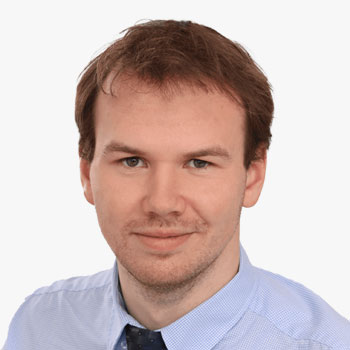

Adam is a Senior AI & Data Analytics Consultant at PwC Slovakia. He kick-started and currently leads the Computer Vision and Remote Sensing stream within the local consulting practice. He focuses on AI-powered geoanalytics applications, and how to drive their wider adoption in the market. Some of his projects include a system based around object detection on VHR satellite imagery, and large-scale agricultural monitoring system.
Abstract
Geoanalytics as an end-to-end solution - why geospatial tech companies need to extend their focus beyond just the geo
AI-powered geoanalytics has become increasingly accessible and many companies and institutions are joining the space. However, wider adoption of these technologies has still not reached its full potential. In our presentation we will discuss common issues that stall the uptake, and how they can be tackled. As consultants, we recognize that the success of implementing geoanalytics depends not only on the technology itself but also on the client's internal capabilities and overall understanding of the technology. Client issues such as limited internal GIS expertise, poor data quality, and lack of awareness are often not effectively addressed by the industry. We will share our experiences of introducing AI-powered geoanalytics to clients facing these challenges and discuss practical solutions to overcome them.
Adam Knaze
 Adam Knaze
Senior Consultant, Geoanalytics Lead , PwC Advisory , Slovakia
Adam Knaze
Senior Consultant, Geoanalytics Lead , PwC Advisory , Slovakia
Adam is a Senior AI & Data Analytics Consultant at PwC Slovakia. He kick-started and currently leads the Computer Vision and Remote Sensing stream within the local consulting practice. He focuses on AI-powered geoanalytics applications, and how to drive their wider adoption in the market. Some of his projects include a system based around object detection on VHR satellite imagery, and large-scale agricultural monitoring system.
Abstract
Geoanalytics as an end-to-end solution - why geospatial tech companies need to extend their focus beyond just the geo
AI-powered geoanalytics has become increasingly accessible and many companies and institutions are joining the space. However, wider adoption of these technologies has still not reached its full potential. In our presentation we will discuss common issues that stall the uptake, and how they can be tackled. As consultants, we recognize that the success of implementing geoanalytics depends not only on the technology itself but also on the client's internal capabilities and overall understanding of the technology. Client issues such as limited internal GIS expertise, poor data quality, and lack of awareness are often not effectively addressed by the industry. We will share our experiences of introducing AI-powered geoanalytics to clients facing these challenges and discuss practical solutions to overcome them.

Adam is a Senior AI & Data Analytics Consultant at PwC Slovakia. He kick-started and currently leads the Computer Vision and Remote Sensing stream within the local consulting practice. He focuses on AI-powered geoanalytics applications, and how to drive their wider adoption in the market. Some of his projects include a system based around object detection on VHR satellite imagery, and large-scale agricultural monitoring system.
Abstract
Geoanalytics as an end-to-end solution - why geospatial tech companies need to extend their focus beyond just the geo
AI-powered geoanalytics has become increasingly accessible and many companies and institutions are joining the space. However, wider adoption of these technologies has still not reached its full potential. In our presentation we will discuss common issues that stall the uptake, and how they can be tackled. As consultants, we recognize that the success of implementing geoanalytics depends not only on the technology itself but also on the client's internal capabilities and overall understanding of the technology. Client issues such as limited internal GIS expertise, poor data quality, and lack of awareness are often not effectively addressed by the industry. We will share our experiences of introducing AI-powered geoanalytics to clients facing these challenges and discuss practical solutions to overcome them.
Senior Consultant, Geoanalytics Lead | PwC Advisory | Slovakia
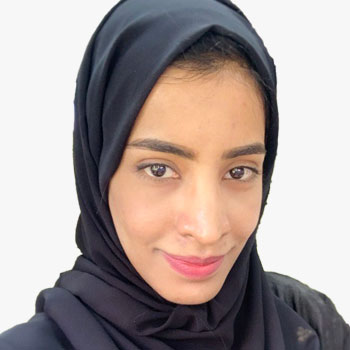

Khadija AL FALAHI is a GIS Analyst at Petroleum Development Oman with five years of experience managing GIS databases using ArcGIS Software. Assisting GIS users with various data development and project support initiatives. Continuously seeks to improve processes, identify business opportunities, and add value to the organization.
Abstract
Road Safety Data Spatialization & Deep Learning
Khadija Al-Falahi
 Khadija Al-Falahi
Geospatial Consultant , Petroleum Development Oman , Oman
Khadija Al-Falahi
Geospatial Consultant , Petroleum Development Oman , Oman
Khadija AL FALAHI is a GIS Analyst at Petroleum Development Oman with five years of experience managing GIS databases using ArcGIS Software. Assisting GIS users with various data development and project support initiatives. Continuously seeks to improve processes, identify business opportunities, and add value to the organization.
Abstract
Road Safety Data Spatialization & Deep Learning

Khadija AL FALAHI is a GIS Analyst at Petroleum Development Oman with five years of experience managing GIS databases using ArcGIS Software. Assisting GIS users with various data development and project support initiatives. Continuously seeks to improve processes, identify business opportunities, and add value to the organization.
Abstract
Road Safety Data Spatialization & Deep Learning
Geospatial Consultant | Petroleum Development Oman | Oman
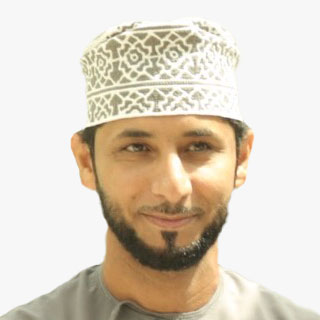

Ahmed Al Mandhari is a geospatial consultant at Geomatics Petroleum Development Oman Company (PDO). He has been working with spatial data and technology for over 25 years.
Experienced in GIS and mapping, provide surface and subsurface data support, in-house training, and fit-for-purpose GIS application training. He holds a BSc. First Degree in Information Systems.
He supports the Exploration and Production (E&P) discipline on geodata management, mapping, and the use of GIS to support exploration maturation and the Play Based Elements (PBE) workflow.
Ahmed went to do STIA at Shell Brazil in Rio de Janeiro. He has played a significant role in COVID-19 pandemic tracking and control using geospatial analytics capabilities and has developed a digital dashboard to track vital live data to help PDO's coronavirus response. Ahmed also branches out to do more robotic process automation (RPA) for some projects. He motivates teams, drives projects to successful completion, conveys complex technical requirements and data, and exceeds customer expectations.
Abstract
Road Safety Data Spatialization & Deep Learning
Ahmed Al-Mandhari
 Ahmed Al-Mandhari
Geospatial Consultant , Petroleum Development Oman , Oman
Ahmed Al-Mandhari
Geospatial Consultant , Petroleum Development Oman , Oman
Ahmed Al Mandhari is a geospatial consultant at Geomatics Petroleum Development Oman Company (PDO). He has been working with spatial data and technology for over 25 years.
Experienced in GIS and mapping, provide surface and subsurface data support, in-house training, and fit-for-purpose GIS application training. He holds a BSc. First Degree in Information Systems.
He supports the Exploration and Production (E&P) discipline on geodata management, mapping, and the use of GIS to support exploration maturation and the Play Based Elements (PBE) workflow.
Ahmed went to do STIA at Shell Brazil in Rio de Janeiro. He has played a significant role in COVID-19 pandemic tracking and control using geospatial analytics capabilities and has developed a digital dashboard to track vital live data to help PDO's coronavirus response. Ahmed also branches out to do more robotic process automation (RPA) for some projects. He motivates teams, drives projects to successful completion, conveys complex technical requirements and data, and exceeds customer expectations.
Abstract
Road Safety Data Spatialization & Deep Learning

Ahmed Al Mandhari is a geospatial consultant at Geomatics Petroleum Development Oman Company (PDO). He has been working with spatial data and technology for over 25 years.
Experienced in GIS and mapping, provide surface and subsurface data support, in-house training, and fit-for-purpose GIS application training. He holds a BSc. First Degree in Information Systems.
He supports the Exploration and Production (E&P) discipline on geodata management, mapping, and the use of GIS to support exploration maturation and the Play Based Elements (PBE) workflow.
Ahmed went to do STIA at Shell Brazil in Rio de Janeiro. He has played a significant role in COVID-19 pandemic tracking and control using geospatial analytics capabilities and has developed a digital dashboard to track vital live data to help PDO's coronavirus response. Ahmed also branches out to do more robotic process automation (RPA) for some projects. He motivates teams, drives projects to successful completion, conveys complex technical requirements and data, and exceeds customer expectations.
Abstract
Road Safety Data Spatialization & Deep Learning
Geospatial Consultant | Petroleum Development Oman | Oman


Jani Kylmaaho has worked with geospatial data infrastructures, data production and distribution as well as digitalization for 20+ years. He has been involved in national and international collaboration, managing and participating in development efforts for both public and private sectors. Currently Jani is the Chief Digital Officer at National Land Survey of Finland.
Abstract
Exploring AI-enabled opportunities and exploiting AI in practical operations is a hot topic across various industries as well as governmental agencies. How to create more value with less resources? The National Land Survey of Finland (NLS), as a forerunner of technology innovation, launched a project to explore how AI technologies could benefit our spatial data production. The Advanced Technology for national topographic Map Updating (ATMU) was started beginning of 2021. After two years, NLS has achieved impressive results in identifying topographic features such as buildings, roads and small waterways. In this talk, we will share the results of our work so far and offer insight into how further development will change the focus and effectiveness of spatial data production at NLS.
Jani Kylmaaho
 Jani Kylmaaho
Director of Development and Digitalization , National Land Survey of Finland , Finland
Jani Kylmaaho
Director of Development and Digitalization , National Land Survey of Finland , Finland
Jani Kylmaaho has worked with geospatial data infrastructures, data production and distribution as well as digitalization for 20+ years. He has been involved in national and international collaboration, managing and participating in development efforts for both public and private sectors. Currently Jani is the Chief Digital Officer at National Land Survey of Finland.
Abstract
Exploring AI-enabled opportunities and exploiting AI in practical operations is a hot topic across various industries as well as governmental agencies. How to create more value with less resources? The National Land Survey of Finland (NLS), as a forerunner of technology innovation, launched a project to explore how AI technologies could benefit our spatial data production. The Advanced Technology for national topographic Map Updating (ATMU) was started beginning of 2021. After two years, NLS has achieved impressive results in identifying topographic features such as buildings, roads and small waterways. In this talk, we will share the results of our work so far and offer insight into how further development will change the focus and effectiveness of spatial data production at NLS.

Jani Kylmaaho has worked with geospatial data infrastructures, data production and distribution as well as digitalization for 20+ years. He has been involved in national and international collaboration, managing and participating in development efforts for both public and private sectors. Currently Jani is the Chief Digital Officer at National Land Survey of Finland.
Abstract
Exploring AI-enabled opportunities and exploiting AI in practical operations is a hot topic across various industries as well as governmental agencies. How to create more value with less resources? The National Land Survey of Finland (NLS), as a forerunner of technology innovation, launched a project to explore how AI technologies could benefit our spatial data production. The Advanced Technology for national topographic Map Updating (ATMU) was started beginning of 2021. After two years, NLS has achieved impressive results in identifying topographic features such as buildings, roads and small waterways. In this talk, we will share the results of our work so far and offer insight into how further development will change the focus and effectiveness of spatial data production at NLS.
Director of Development and Digitalization | National Land Survey of Finland | Finland


With a university degree in civil engineering, I was Chief Digital Officer of the Bavarian State Ministry of Housing, Building and Transport for a long time. In spring 2021 I founded takatoa, a startup focused on Quantum Artificial Intelligence, using it to generate business-relevant insights from spatial data. takatoa especially develops concepts, strategies and solutions for business and science by researching, analysing and enhancing existing structures and possible trends. Currently, we are working on solutions implemented in ArcGIS Notebooks that utilises various quantum algorithms.
Abstract
Quantum computing is the next big thing in the evolution of information technology. Combined with GIS tools it will facilitate a wide range of advances in location intelligence. Artificial intelligence has achieved significant growth in interest and the number of groundbreaking applications in recent years. Examples using such technologies are the prediction of condition changes for assets or the derivation of object labels from laser scan data (LIDAR point clouds). Consideration of permanently updated data are increasingly being included in such studies as well. The activities of takatoa use, among others, such data from the German Weather Service (DWD) or mobility data as they are available worldwide nowadays. Recent advances in the development and commercialization of quantum technologies have profoundly changed the landscape of quantum algorithms. The design paradigm of hybrid algorithms that integrate quantum and classical processing has therefore become increasingly important. The presentation shows results of takatoa's future-oriented studies that use artificial intelligence, especially Deep Learning from Big Data, in combination with upcoming quantum technologies.
Roland Degelmann
 Roland Degelmann
CEO , Takatoa , Germany
Roland Degelmann
CEO , Takatoa , Germany
With a university degree in civil engineering, I was Chief Digital Officer of the Bavarian State Ministry of Housing, Building and Transport for a long time. In spring 2021 I founded takatoa, a startup focused on Quantum Artificial Intelligence, using it to generate business-relevant insights from spatial data. takatoa especially develops concepts, strategies and solutions for business and science by researching, analysing and enhancing existing structures and possible trends. Currently, we are working on solutions implemented in ArcGIS Notebooks that utilises various quantum algorithms.
Abstract
Quantum computing is the next big thing in the evolution of information technology. Combined with GIS tools it will facilitate a wide range of advances in location intelligence. Artificial intelligence has achieved significant growth in interest and the number of groundbreaking applications in recent years. Examples using such technologies are the prediction of condition changes for assets or the derivation of object labels from laser scan data (LIDAR point clouds). Consideration of permanently updated data are increasingly being included in such studies as well. The activities of takatoa use, among others, such data from the German Weather Service (DWD) or mobility data as they are available worldwide nowadays. Recent advances in the development and commercialization of quantum technologies have profoundly changed the landscape of quantum algorithms. The design paradigm of hybrid algorithms that integrate quantum and classical processing has therefore become increasingly important. The presentation shows results of takatoa's future-oriented studies that use artificial intelligence, especially Deep Learning from Big Data, in combination with upcoming quantum technologies.

With a university degree in civil engineering, I was Chief Digital Officer of the Bavarian State Ministry of Housing, Building and Transport for a long time. In spring 2021 I founded takatoa, a startup focused on Quantum Artificial Intelligence, using it to generate business-relevant insights from spatial data. takatoa especially develops concepts, strategies and solutions for business and science by researching, analysing and enhancing existing structures and possible trends. Currently, we are working on solutions implemented in ArcGIS Notebooks that utilises various quantum algorithms.
Abstract
Quantum computing is the next big thing in the evolution of information technology. Combined with GIS tools it will facilitate a wide range of advances in location intelligence. Artificial intelligence has achieved significant growth in interest and the number of groundbreaking applications in recent years. Examples using such technologies are the prediction of condition changes for assets or the derivation of object labels from laser scan data (LIDAR point clouds). Consideration of permanently updated data are increasingly being included in such studies as well. The activities of takatoa use, among others, such data from the German Weather Service (DWD) or mobility data as they are available worldwide nowadays. Recent advances in the development and commercialization of quantum technologies have profoundly changed the landscape of quantum algorithms. The design paradigm of hybrid algorithms that integrate quantum and classical processing has therefore become increasingly important. The presentation shows results of takatoa's future-oriented studies that use artificial intelligence, especially Deep Learning from Big Data, in combination with upcoming quantum technologies.
CEO | Takatoa | Germany


Gosia Wrzesinska holds a PhD in computer science and has extensive experience in (geographical) data processing, databases and machine learning. Her company, Coders Co., works with Dutch municipalities on digitizing their old blueprint archives and turning them into detailed 3D city models.
Abstract
From old blueprints to 3D city model
Together with Dutch cities of Rotterdam and The Hague, we're turning their archives of old blueprints into detailed 3D models of the buildings. We use machine learning algorithms to and advance geometric processing to extract building geometries from old, scanned drawings.
Gosia Wrzesinska
 Gosia Wrzesinska
CEO , Coders Co. , The Netherlands
Gosia Wrzesinska
CEO , Coders Co. , The Netherlands
Gosia Wrzesinska holds a PhD in computer science and has extensive experience in (geographical) data processing, databases and machine learning. Her company, Coders Co., works with Dutch municipalities on digitizing their old blueprint archives and turning them into detailed 3D city models.
Abstract
From old blueprints to 3D city model
Together with Dutch cities of Rotterdam and The Hague, we're turning their archives of old blueprints into detailed 3D models of the buildings. We use machine learning algorithms to and advance geometric processing to extract building geometries from old, scanned drawings.

Gosia Wrzesinska holds a PhD in computer science and has extensive experience in (geographical) data processing, databases and machine learning. Her company, Coders Co., works with Dutch municipalities on digitizing their old blueprint archives and turning them into detailed 3D city models.
Abstract
From old blueprints to 3D city model
Together with Dutch cities of Rotterdam and The Hague, we're turning their archives of old blueprints into detailed 3D models of the buildings. We use machine learning algorithms to and advance geometric processing to extract building geometries from old, scanned drawings.
CEO | Coders Co. | The Netherlands


A veteran in the data and analytics space, Jason Arnold joined Ocient after working on a PhD on scaling high performance analytics databases. He has been in the industry since 2006 having worked across leading large-scale database deployments with with DB2 z/OS, Netezza, ETL/ELT, data replication, performance tuning, and database application development. In addition to guiding the development of Ocient's core data and analytics engine, Jason has led the company's research and development of machine learning algorithms with a focus on enabling data scientists to leverage ML models directly through SQL at scale. Jason has bachelor's degrees in computer science and mathematics and a master's degree in computer science. Jason loves enjoying Belgian beers and programming in assembler, sometimes at the same time.
Abstract
Transforming a Traditional Database into a Full-Fledged Computing Platform with Machine Learning and SQL
Whether you're training a model or using it to do scoring or predictions, building machine learning functionality directly into your SQL syntax can transform a fairly standard database into a fully-fledged scientific computing platform. In this session, Jason Arnold, co-founder and distinguished engineer at Ocient, will discuss strategies for making in-database machine learning a first class citizen, particularly when working with trillion-row, petabyte-scale datasets. Jason will cover: - Leveraging matrices as a first class data type to seamlessly integrate linear algebra into the SQL dialect - How to perform predictions entirely within SQL, decreasing complexity, cost, and latency on large-scale datasets - The top 15 machine learning models enabling users to perform critical data science calculations locally without the need to extract a working dataset from the database - The importance of workload management to prioritize resources and allow for co-location of data science workloads alongside mission critical workloads within a scalable, distributed platform
Jason Arnold
 Jason Arnold
Distinguished Engineer , Ocient , USA
Jason Arnold
Distinguished Engineer , Ocient , USA
A veteran in the data and analytics space, Jason Arnold joined Ocient after working on a PhD on scaling high performance analytics databases. He has been in the industry since 2006 having worked across leading large-scale database deployments with with DB2 z/OS, Netezza, ETL/ELT, data replication, performance tuning, and database application development. In addition to guiding the development of Ocient's core data and analytics engine, Jason has led the company's research and development of machine learning algorithms with a focus on enabling data scientists to leverage ML models directly through SQL at scale. Jason has bachelor's degrees in computer science and mathematics and a master's degree in computer science. Jason loves enjoying Belgian beers and programming in assembler, sometimes at the same time.
Abstract
Transforming a Traditional Database into a Full-Fledged Computing Platform with Machine Learning and SQL
Whether you're training a model or using it to do scoring or predictions, building machine learning functionality directly into your SQL syntax can transform a fairly standard database into a fully-fledged scientific computing platform. In this session, Jason Arnold, co-founder and distinguished engineer at Ocient, will discuss strategies for making in-database machine learning a first class citizen, particularly when working with trillion-row, petabyte-scale datasets. Jason will cover: - Leveraging matrices as a first class data type to seamlessly integrate linear algebra into the SQL dialect - How to perform predictions entirely within SQL, decreasing complexity, cost, and latency on large-scale datasets - The top 15 machine learning models enabling users to perform critical data science calculations locally without the need to extract a working dataset from the database - The importance of workload management to prioritize resources and allow for co-location of data science workloads alongside mission critical workloads within a scalable, distributed platform

A veteran in the data and analytics space, Jason Arnold joined Ocient after working on a PhD on scaling high performance analytics databases. He has been in the industry since 2006 having worked across leading large-scale database deployments with with DB2 z/OS, Netezza, ETL/ELT, data replication, performance tuning, and database application development. In addition to guiding the development of Ocient's core data and analytics engine, Jason has led the company's research and development of machine learning algorithms with a focus on enabling data scientists to leverage ML models directly through SQL at scale. Jason has bachelor's degrees in computer science and mathematics and a master's degree in computer science. Jason loves enjoying Belgian beers and programming in assembler, sometimes at the same time.
Abstract
Transforming a Traditional Database into a Full-Fledged Computing Platform with Machine Learning and SQL
Whether you're training a model or using it to do scoring or predictions, building machine learning functionality directly into your SQL syntax can transform a fairly standard database into a fully-fledged scientific computing platform. In this session, Jason Arnold, co-founder and distinguished engineer at Ocient, will discuss strategies for making in-database machine learning a first class citizen, particularly when working with trillion-row, petabyte-scale datasets. Jason will cover: - Leveraging matrices as a first class data type to seamlessly integrate linear algebra into the SQL dialect - How to perform predictions entirely within SQL, decreasing complexity, cost, and latency on large-scale datasets - The top 15 machine learning models enabling users to perform critical data science calculations locally without the need to extract a working dataset from the database - The importance of workload management to prioritize resources and allow for co-location of data science workloads alongside mission critical workloads within a scalable, distributed platform
Distinguished Engineer | Ocient | USA
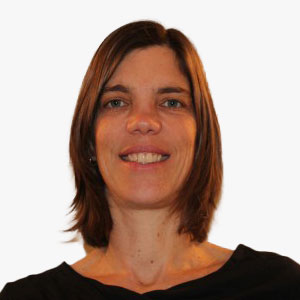

An is an experienced GIS and GeoICT Business Manager with over 20 years of professional experience in the field of GIS and spatial data. She is team leader and project manager of GIS and GeoICT projects in the field of geodata management, implementation of geographic software applications and integration of geodata within organizational processes. An has a thorough knowledge of the implementation of spatial data infrastructures based on OGC standards and INSPIRE principles at local and regional level, based on commercial and open source GEO software.
Abstract
Geospatial AI's potential for developing new data products
Geo Artificial Intelligence opens the door to a whole range of new insights. Thanks to techniques such as computer vision, superresolution, depth estimation, ... data and imagery can be analyzed faster and more accurately. This opens the way to new applications in various fields such as energy, sustainability, insurance, urban development and telecom. In this presentation we will show how this leads to the accelerated development of new data products for these different use cases.
An Heirman
 An Heirman
Team Lead , GIM, a Merkator company , Belgium
An Heirman
Team Lead , GIM, a Merkator company , Belgium
An is an experienced GIS and GeoICT Business Manager with over 20 years of professional experience in the field of GIS and spatial data. She is team leader and project manager of GIS and GeoICT projects in the field of geodata management, implementation of geographic software applications and integration of geodata within organizational processes. An has a thorough knowledge of the implementation of spatial data infrastructures based on OGC standards and INSPIRE principles at local and regional level, based on commercial and open source GEO software.
Abstract
Geospatial AI's potential for developing new data products
Geo Artificial Intelligence opens the door to a whole range of new insights. Thanks to techniques such as computer vision, superresolution, depth estimation, ... data and imagery can be analyzed faster and more accurately. This opens the way to new applications in various fields such as energy, sustainability, insurance, urban development and telecom. In this presentation we will show how this leads to the accelerated development of new data products for these different use cases.

An is an experienced GIS and GeoICT Business Manager with over 20 years of professional experience in the field of GIS and spatial data. She is team leader and project manager of GIS and GeoICT projects in the field of geodata management, implementation of geographic software applications and integration of geodata within organizational processes. An has a thorough knowledge of the implementation of spatial data infrastructures based on OGC standards and INSPIRE principles at local and regional level, based on commercial and open source GEO software.
Abstract
Geospatial AI's potential for developing new data products
Geo Artificial Intelligence opens the door to a whole range of new insights. Thanks to techniques such as computer vision, superresolution, depth estimation, ... data and imagery can be analyzed faster and more accurately. This opens the way to new applications in various fields such as energy, sustainability, insurance, urban development and telecom. In this presentation we will show how this leads to the accelerated development of new data products for these different use cases.
Team Lead | GIM, a Merkator company | Belgium
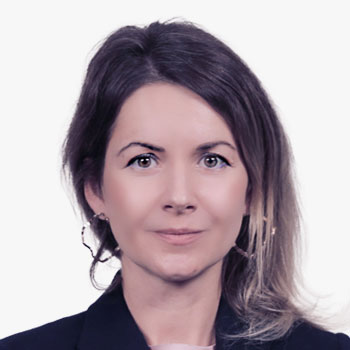

Katya Soueid has a diverse background in finance, economics, and international business, with experience working in data acquisition and healthcare technology startups. In her current role as Head of Product and Strategy at B.O.T, she is responsible for driving the business strategy and achieving operational excellence. This includes researching new business ideas and piloting them, as well as managing the budgeting, financials, and business planning for the company. Fulbright and DAAD scholar, Katya holds a Ph.D. in Economics and a Master's degree in International Business. Currently Katya is responsible for the international launch of HAIVO, data annotation service focused on earth observation geospatial applications.
Abstract
Social and sustainable procurement practices and ethics applied to the AI data services
There is an opinion that most AI technologies ultimately serve the following goals: Selling, Spying & Gambling. To add to the bad reputation of AI, there are reported cases of sweatshops where people are hired to perform mundane data labeling tasks for negligible pay and gruesome work environment and conditions, meanwhile claiming they are providing jobs and better futures to the people. While it is important to acknowledge the potential negative consequences of AI technologies, it is equally important to recognize their potential to do good and work towards using them in a responsible and ethical manner. For example, AI can be used to improve healthcare, reduce traffic congestion, and increase energy efficiency. Regarding non-ethical work practices, it is important for companies to prioritize the well-being and fair treatment of their workers, and for consumers to be aware of the ethical implications of the products and services they are using.
Katya Soueid
 Katya Soueid
Head of Product and Strategy , B.O.T , Lebanon
Katya Soueid
Head of Product and Strategy , B.O.T , Lebanon
Katya Soueid has a diverse background in finance, economics, and international business, with experience working in data acquisition and healthcare technology startups. In her current role as Head of Product and Strategy at B.O.T, she is responsible for driving the business strategy and achieving operational excellence. This includes researching new business ideas and piloting them, as well as managing the budgeting, financials, and business planning for the company.
Fulbright and DAAD scholar, Katya holds a Ph.D. in Economics and a Master's degree in International Business. Currently Katya is responsible for the international launch of HAIVO, data annotation service focused on earth observation geospatial applications.
Abstract
Social and sustainable procurement practices and ethics applied to the AI data services
There is an opinion that most AI technologies ultimately serve the following goals: Selling, Spying & Gambling. To add to the bad reputation of AI, there are reported cases of sweatshops where people are hired to perform mundane data labeling tasks for negligible pay and gruesome work environment and conditions, meanwhile claiming they are providing jobs and better futures to the people. While it is important to acknowledge the potential negative consequences of AI technologies, it is equally important to recognize their potential to do good and work towards using them in a responsible and ethical manner. For example, AI can be used to improve healthcare, reduce traffic congestion, and increase energy efficiency. Regarding non-ethical work practices, it is important for companies to prioritize the well-being and fair treatment of their workers, and for consumers to be aware of the ethical implications of the products and services they are using.

Katya Soueid has a diverse background in finance, economics, and international business, with experience working in data acquisition and healthcare technology startups. In her current role as Head of Product and Strategy at B.O.T, she is responsible for driving the business strategy and achieving operational excellence. This includes researching new business ideas and piloting them, as well as managing the budgeting, financials, and business planning for the company. Fulbright and DAAD scholar, Katya holds a Ph.D. in Economics and a Master's degree in International Business. Currently Katya is responsible for the international launch of HAIVO, data annotation service focused on earth observation geospatial applications.
Abstract
Social and sustainable procurement practices and ethics applied to the AI data services
There is an opinion that most AI technologies ultimately serve the following goals: Selling, Spying & Gambling. To add to the bad reputation of AI, there are reported cases of sweatshops where people are hired to perform mundane data labeling tasks for negligible pay and gruesome work environment and conditions, meanwhile claiming they are providing jobs and better futures to the people. While it is important to acknowledge the potential negative consequences of AI technologies, it is equally important to recognize their potential to do good and work towards using them in a responsible and ethical manner. For example, AI can be used to improve healthcare, reduce traffic congestion, and increase energy efficiency. Regarding non-ethical work practices, it is important for companies to prioritize the well-being and fair treatment of their workers, and for consumers to be aware of the ethical implications of the products and services they are using.
Head of Product and Strategy | B.O.T | Lebanon